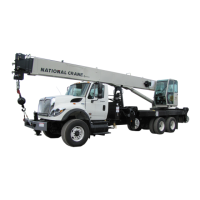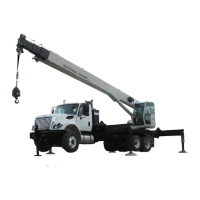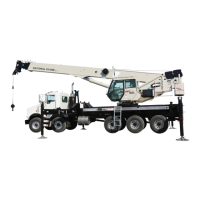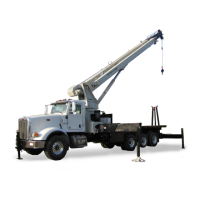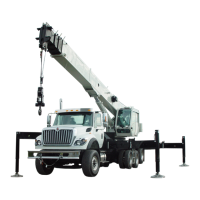Published 3-30-2018, CTRL 636-05 2-23
CD15 OPERATOR MANUAL SAFETY INFORMATION
Crane operation is dangerous when close to an energized
electrical power source. Exercise extreme caution and
prudent judgement. Operate slowly and cautiously when in
the vicinity of power lines.
Before operating this crane in the vicinity of electrical power
lines or equipment, notify the power utility company. Obtain
positive and absolute assurance that the power has been
turned off.
This crane is not insulated. Always consider all parts of the
load and the crane, including the hoist rope, wire rope,
pendant cables, and tag lines, as conductors. You, the
operator, are responsible for alerting all personnel of
dangers associated with electrical power lines and
equipment. Do not allow unnecessary personnel in the
vicinity of the crane while operating. Permit no one to lean
against or touch the crane. Permit no one, including riggers
and load handlers, to hold the load, load lines, tag lines, or
rigging gear.
If the load, hoist rope, boom, or any portion of the crane
contacts or comes too close to an electrical power source,
everyone in, on, and around the crane can be seriously
injured or killed.
Most overhead power lines are not insulated. Treat all
overhead power lines as being energized unless you have
reliable information to the contrary from the utility company
or owner.
The rules in this Operator Manual must be followed at all
times, even if the electrical power lines or equipment have
been de-energized.
The safest way to avoid electrocution is to stay away from
electrical power lines and electrical power sources.
It is not always necessary to contact a power line or power
source to become electrocuted. Electricity, depending on
magnitude, can arc or jump to any part of the load, load line,
or crane boom if it comes too close to an electrical power
source. Low voltages can also be dangerous.
Set-Up and Operation
During crane use, assume that every line is energized (“hot”
or “live”) and take the necessary precautions.
Set up the crane in a position such that the load, boom, or
any part of the crane and its attachments cannot be moved to
within 6 m (20 ft) of electrical power lines or equipment. This
includes the crane boom (fully extended to maximum height,
radius, and length) and all attachments (boom extensions,
rigging, loads, etc.). Overhead lines tend to blow in the wind
so allow for lines’ movement when determining safe
operating distance.
A suitable barricade should be erected to physically restrain
the crane and all attachments (including the load) from
entering into an unsafe distance from electrical power lines
or equipment.
Plan ahead and always plan a safe route before traveling
under power lines. Rider poles should be erected on each
side of a crossing to assure sufficient clearance is
maintained.
United States OSHA regulations require a flagman when
operating in close proximity to energized power lines.
Appoint a reliable and qualified signal person, equipped with
a loud signal whistle or horn and voice communication
equipment, to warn the operator when any part of the crane
or load moves near a power source. This person shall have
no other duties while the crane is working.
Tag lines should always be made of non-conductive
materials. Any tag line that is wet or dirty can conduct
electricity.
Do not store materials under power lines or close to
electrical power sources.
Electrocution Hazard Devices
The use of insulated links, insulated boom cages/guards, or
proximity warning devices does not assure that electrical
contact will not occur. Even if codes or regulations require
the use of such devices, failure to follow the rules listed here
may result in serious injury or death. You should be aware
that such devices have limitations and you should follow the
rules and precautions outlined in this manual at all times
even if the crane is equipped with these devices.
Insulating links installed into the load line afford limited
protection from electrocution hazards. Links are limited in
their lifting abilities, insulating properties, and other
properties that affect their performance. Moisture, dust, dirt,
oils, and other contaminants can cause a link to conduct
electricity. Due to their capacity ratings, some links are not
effective for large cranes and/or high voltages/currents.
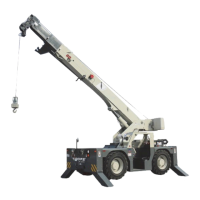
